Use controls above or click here to open this Hometown Heroes podcast in a new window
Episode #445 of Hometown Heroes airs throughout Veterans Day weekend, preparing you for the 75th anniversary of the attack on Pearl Harbor with the accounts of five men who experienced that fateful day in five very different ways.
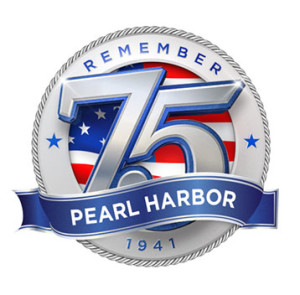
96-year-old Francisco “Frank” Paredes of Atwater, CA still has crystal clear memories of December 7, 1941. He had enlisted in the Army just three months earlier, one of four brothers in a family of 16 children to serve in World War II. On December 6, he went to visit a friend from his Arizona hometown who was serving aboard the USS West Virginia. Returning to Schofield Barracks the next morning, he was on his way to a church service when the Japanese raid on Oahu began.
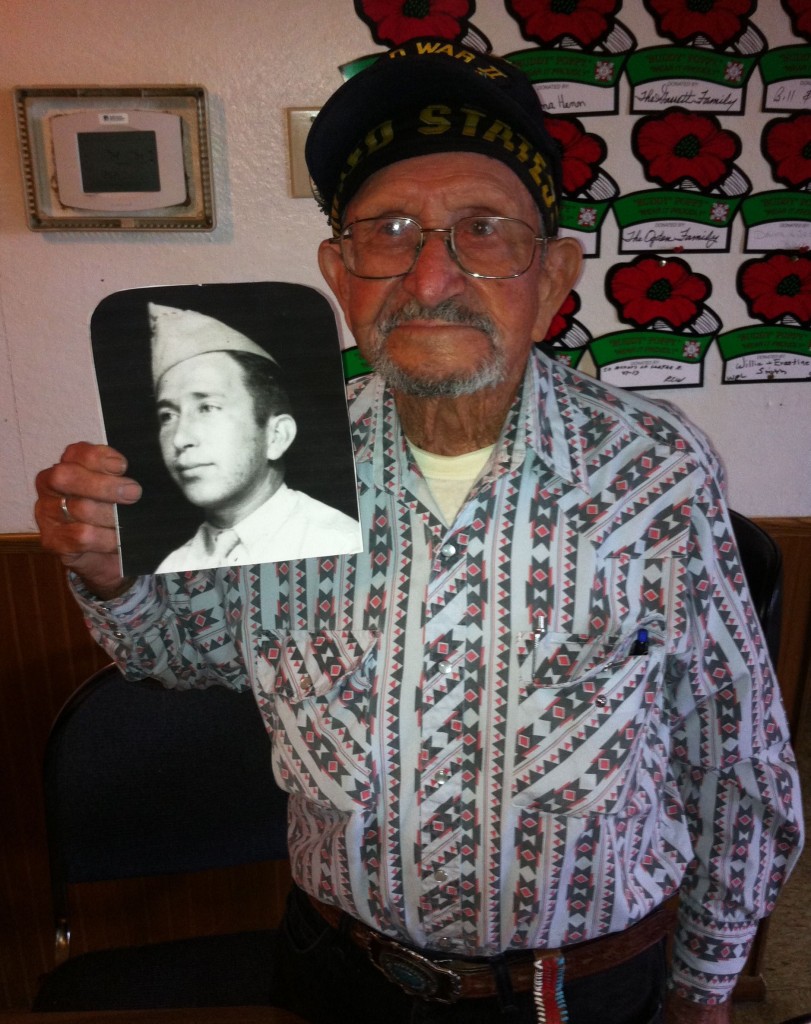
“All of a sudden, I heard a big noise,” you’ll hear Frank remember. “The sirens went off, and they said ‘This is not a drill.’” Manning the first machine gun he could find, Paredes started firing at Japanese torpedo bombers flying overhead. Once the two waves of the attack were over, he spent the next week helping to clean up the devastation left behind.
“Thinking about it makes me cry,” he says. “Innocent people that got caught in the turmoil like that.”
Among the more than 2,400 Americans killed that day were five from Schofield Barracks, where Paredes was stationed, as well as a cousin of Frank’s, who he says remains entombed aboard the USS Arizona. Listen to this episode of Hometown Heroes for more of Paredes’ December 7 memories. For his entire military story, including the three times he was wounded in World War II, listen to his entire original interview on episode #328.
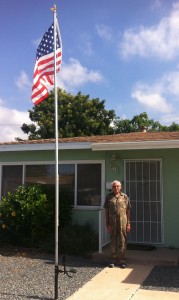
98-year-old Eugene Leonard of Chula Vista, CA will be heading to Oahu for the 75th Anniversary of Pearl Harbor on December 7th. The Kansas native was stationed at Marine Corps Air Station Ewa, west of Pearl Harbor, and was targeted by some of the earliest bullets fired on that “Day of Infamy.” He found shelter in a scorpion and spider infested hole that had been used as part of a dirigible program in World War I.
“I was trying to get away from the bullets is all I knew,” you’ll hear Gene explain.
Gene and his fellow Marines were virtually defenseless. They had few weapons and zero ammunition. When he emerged from his hiding place, he witnessed a chaotic scene which would leave all of the base’s aircraft destroyed. “Airplanes on fire. Piles of planes a-burning,” he remembers. “All that fuel needed to be burnt. It was burning everywhere.” Four Marines and two civilians were killed at Ewa Field that day. Leonard is thankful he wasn’t one of them. Catch the rest of his 1941 memories on Hometown Heroes, and for his complete original interview, listen to episode #389.
Robert Thacker was piloting one of twelve unarmed B-17 bombers that made an overnight flight from California, planning to stop in Hawaii on their way to the Philippines. Now 98 and living in San Clemente, CA, the retired Air Force colonel still competes in model airplane competitions, and still carries intense recollections of December 7, 1941.
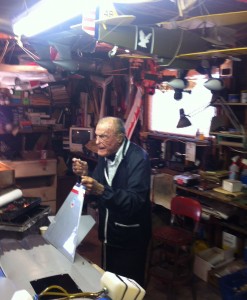
“Scratches in the sky” were explained away as “volcanic action” as he approached Honolulu, and his early attempts at radio communication went unanswered. A big column of black smoke, which in actuality came from an explosion on the USS Arizona, was excused as the burning of a sugar cane field. Finally, as he approached the runway at Hickam Field, the reality of the situation came through loud and clear over the radio. “Number Air Force 4-3-2, you are number two to land, land north to south,” came the message from the tower. “We’re under attack by Japanese aircraft.” In an instant, Thacker’s bomber was under fire from American forces on the ground, mistaking the B-17 for a Japanese plane. Those bullets didn’t strike the plane, but as he broke out of traffic to the right and tried to land crosswind, Thacker was targeted by the enemy. “Three Zeroes jumped me, they shot the right gear out,” he explains. Able to land the plane, Thacker then had to decide where to go. He started toward the flight line, before thinking better of that idea, opting instead to hide out in a nearby swamp. Moments later, 13 Japanese bombers approached in V-formation.
“They just wiped out the flight line, killed a couple of my friends,” you’ll hear Thacker recall. “If we’d have been over there, we wouldn’t be here talking to you.”
Thacker survived and went on to serve 31 years in the Air Force, his time as a test pilot highlighted by a record-breaking 1947 flight in a P-82 named for his wife, Betty Jo. To hear Colonel Thacker’s complete original interview, listen to episode #287.
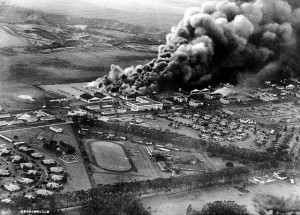
As Robert Thacker was landing at Hickam Field, Oklahoma native Leon Webster was ducking for cover. Webster had been stationed at Hickam since 1939, when it was just a tent city anticipating permanent buildings. On the morning of December 7th, Webster was heading across the street near his barracks, when he saw something he had never seen before. “A Japanese fighter pilot was diving directly at me,” you’ll hear Leon recall. “I could see the old concrete street ripping up in front of me before I dove to the right.”
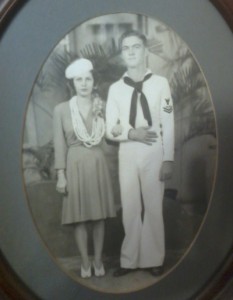
The bullets were close enough that he could feel chips of concrete splashing into his cheek. With a friend, he took cover in the two-foot separation between the ground and the base of a nearby building, a gap designed to guard against moisture damage from the Hawaiian humidity. 191 Americans were killed at Hickam Field that day, including eight personal friends of Leon’s from his squadron.
“It’s the most frightening day that happened to me in my lifetime,” you’ll hear Leon lament. “But on the other hand, it’s the most thankful day, that I survived it.”
If he hadn’t survived the attack, Webster never would have married his wife, Olive, a Hawaiian native, and their three dozen descendants would have never been born. For the complete original interview with Leon Webster, listen to episode #241.
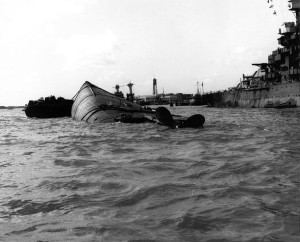
After the 1,177 killed aboard the USS Arizona, another battleship, the USS Oklahoma, suffered the most devastating losses on December 7, 1941, with 429 men losing their lives. 23 sets of brothers died on the Arizona, and the Oklahoma had siblings aboard as well. The final perspective we hear on this special Veterans Day edition of Hometown Heroes comes from the late Richard “Swede” Artley, who served aboard the USS Oklahoma with his older brother, Daryle.
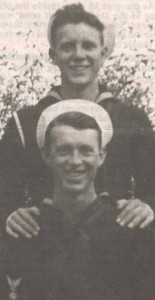
Swede shared his story on episode #181 Hometown Heroes in 2011, less than three weeks before his courageous battle with cancer came to an end. “Pearl Harbor survivor” was a fitting label for the Nebraska native, who wasn’t sure he was going to survive until well into December 8th, 1941. The 19-year-old was in the steering room aft, just below the water line, with seven other sailors, when the first of nine torpedoes to strike the Oklahoma made contact. “We had lights for about ten minutes,” Artley recalled. “Then the lights went out.” Imagine the horror as the ship started to roll to port, eventually revolving more than 150 degrees, nearly completely upside-down. With objects flying everywhere, Artley was struck by a dumbbell that shattered part of his leg. As water rushed in through a fresh air blower, the sailors scrambled to plug the holes. With every ounce of water that came in, some of the remaining oxygen expired. Eventually, two seamen who knew Morse Code were able to communicate with rescue crews on the other side of the Oklahoma’s capsized hull. At roughly 6 p.m. on December 8th, after 34 hours trapped inside that sinking ship, Artley was one of 34 men to be rescued. Some have estimated that only about 15 minutes of air remained when the rescuers drilled their way in to pull the men out.
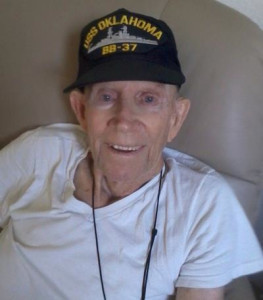
“I was scared, oh yeah.” Swede said. “I can’t understand why we were so lucky.”
Knowing that Daryle had been in the Combat Information Center (CIC), Swede was pretty certain his brother had been killed, and eventually those fears were confirmed. Daryle had competed on the battleship’s baseball team, and Swede believed he was talented enough as a pitcher that he might have made the Major Leagues someday. Instead, Daryle Artley became one of the more than 2,400 Americans who perished in Imperial Japan’s surprise attack on U.S. territory. Their legacy, underscored by Swede and every Pearl Harbor survivor who has shared his story on Hometown Heroes, is vigilance. “Remember Pearl Harbor,” they all echo, and “keep America alert.”
—Paul Loeffler
LINKS TO PEARL HARBOR SURVIVORS TELLING THEIR STORIES ON HOMETOWN HEROES
Episode #441: Chester “Ski” Biernacki, USS Helena
Episode #440: Ed Hall, Hickam Field
Episode #439: Delton “Wally” Walling Part II
Episode #438: Delton “Wally” Walling, observation tower
Episode #420: Bob Dodds, USS Pelias
Episode #396: Pearl Harbor 74th Anniversary
Episode #389: Eugene Leonard, Marine Corps Air Station Ewa
Episode #359: Sam Fryefield, USS Detroit
Episode #344: Russel Winsett, USS Pennsylvania
Episode #328: Francisco Paredes, Schofield Barracks
Episode #292: Elmer Wright, USMC guard
Episode #287: Robert Thacker, flying B-17 into Hickam Field
Episode #242: Pearl Harbor 71st Anniversary
Episode #241: Leon Webster, Hickam Field
Episode #201: Clarence Suzuki, civilian on Oahu
Episode #181: Richard “Swede” Artley, USS Oklahoma
Episode #142: Marion Kesler, USS Hulbert
Episode #73: Al Rodrigues & Herb Weatherwax at USS Arizona Memorial
Episode #61: Roy Molder, USS Rigel
Episode #53: Pearl Harbor 67th Anniversary
Episode #41: Guy Hardin, USS Medusa
Episode #32: Bob McNutt, USS Monaghan
Episode #7: Chuck Lishman, USS Perry
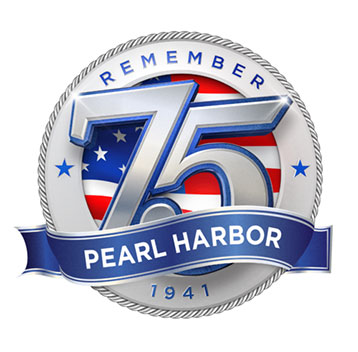


Leave a Reply